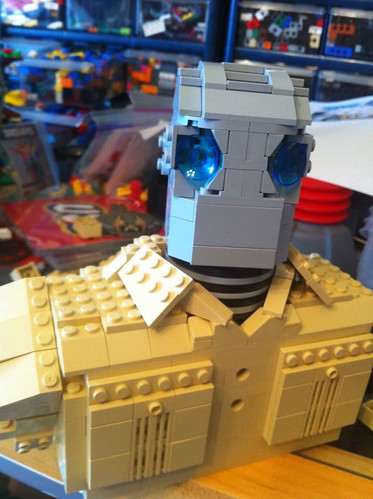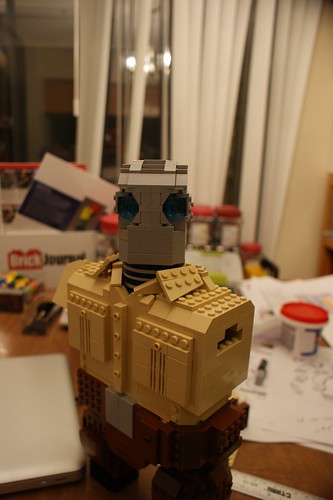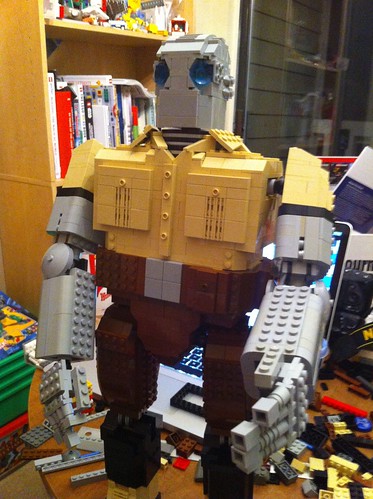It's been a while since I have posted here, and there are a variety of reasons why...working on another issue of
BrickJournal, off on a trip to an event, or in this case, up to planning an event.
BrickMagic is an event that I run in May - it's a modest-sized convention, and it attracts people from as far north as Pennsylvania, as far south as Florida, and as far west as Texas. That's pretty cool - and what I really enjoy about the event is that many of the attendees are people that I have known in the hobby for several years. A lot of the event is making a great party for my friends.
But there are always the challenges that are posed every year. In many ways, setting up an event with a 150 people and a group of volunteers is like a military operation - there has to be advanced planning, mobilizing, then the actual campaign. Most of these aspects are easily managed - budget is the most onerous one, but after that, there's logistics.
One would think that setting up a floor plan would be easy for an event, but it really isn't. While it appears that the effort done is simply moving tables and stantions, there is some thought that has to go into this. It's not easy, and the toughest variable is literally the unknown.
Let me explain this - every year, people signup and pay for their registrations and get ready to go an event. However, there is one thing that isn't always noted: the registrant's MOCs.
There are many reasons why a MOC may not be registered, such as not being finished, or too busy, or maybe not deciding until the last minute. The validity of these arguments is pretty much a relative thing to me, but ultimately, this is a challenge for me and other event coordinators.
Why is this such a challenge? Using the military operation metaphor, it's hard to figure out an operation if you
don't know your troops. What that really means is that it's hard to plan out table space for MOCs if we don't know completely what is coming in. And the margin of MOCs that are registered as opposed to the "surprise MOCs" is a pretty high margin.
For any event coordinator, mapping out the tables is one of the most important things at an event. A good layout showcases everyone and allows viewers to easily go from one place to another...while this is easy to manage at the attendee part of an event, the public part is much more difficult, as the traffic goes significantly higher.
Tables and layouts have to be set up with stantions, which means that a footprint for the layout will be bigger than the layout itself, then walkspace has to be added. Here's some rules of thumb: There is usually a 3 foot gap from a table to a stantion (although it can be reduced to 2 feet) and walkspace is usually 10 feet to allow for people to "clump up" and look as well as let people pass. For larger events, this is pushed larger.
This isn't that big of a deal until a lot of smaller displays end up being separate displays - the space between them requires both the stantion buffer and walkspace between them. This is one of the reasons why there are themed areas, so tables can be lined up together. One large group only has one set of buffers and walkway so it's more efficient.
It's very important that MOCs be listed to allow for better planning. Many of the attendees at BrickMagic have already told me their layout sizes and table requests, and that's what I want to know. I have a floor plan for these people already in mind, but I have to also try to figure out who else will be coming and bringing things.
I don't expect everyone to tell me exactly what they are bringing - there are always new models that come and things just happen, for lack of a better term. However, it must be understood that while it is relatively easy to add one model to a table, or two, or even three, when a table has to be added that wasn't on the floor plan before, that can be pretty disruptive. And honestly, dozens of MOCs come in that are not listed.
So if you really want to help an event out, do it a favor - register, and register your MOCs. You'll give a good impression to the event staff, and you'll be helping in planning. If you have a large display, the sooner you inform the event, the better. Keep in mind that all these events are for you to show off, so we are doing our best for you. Any help you give will only make the events better.
And from all of us coordinators...thanks in advance!
















